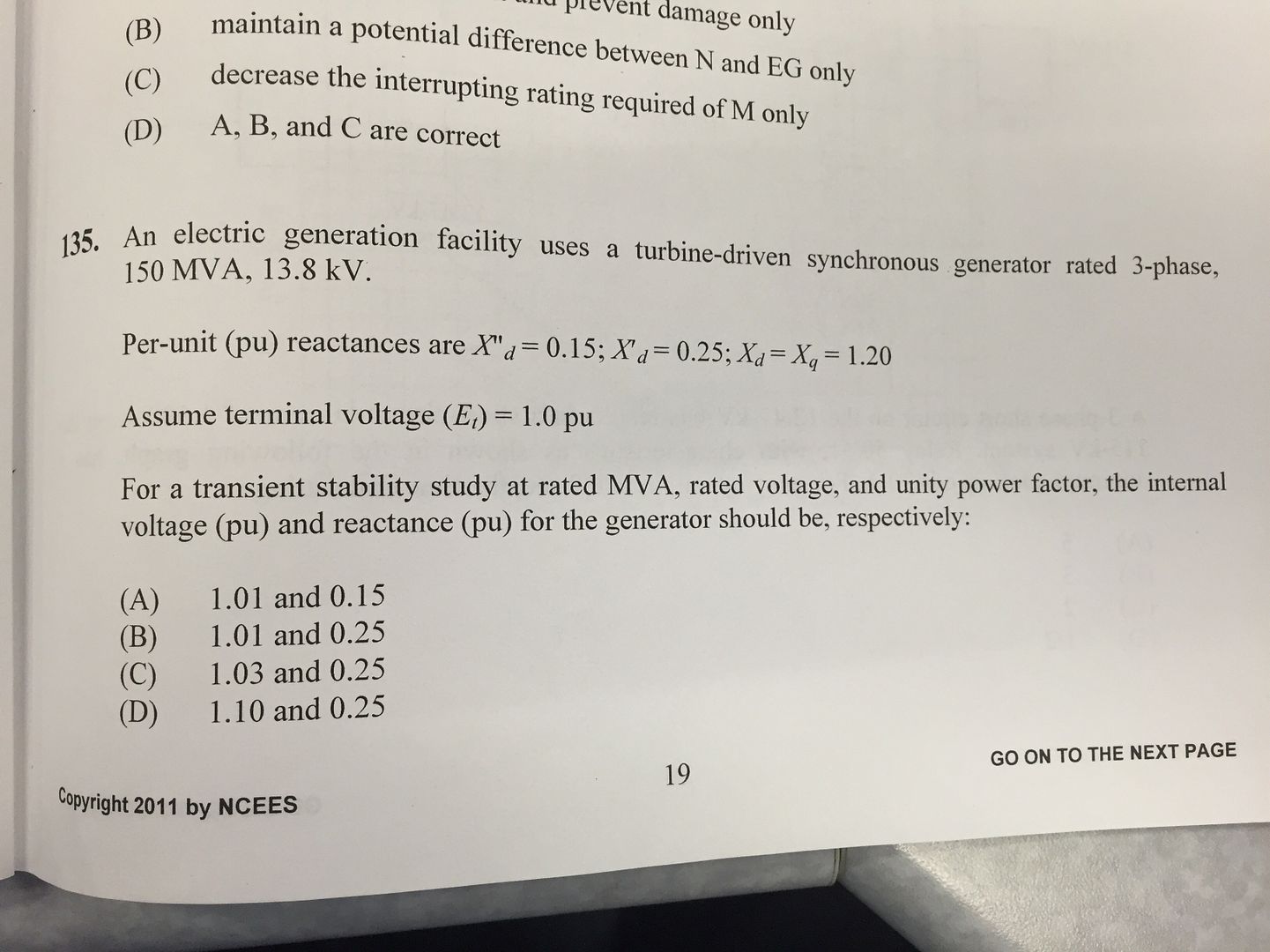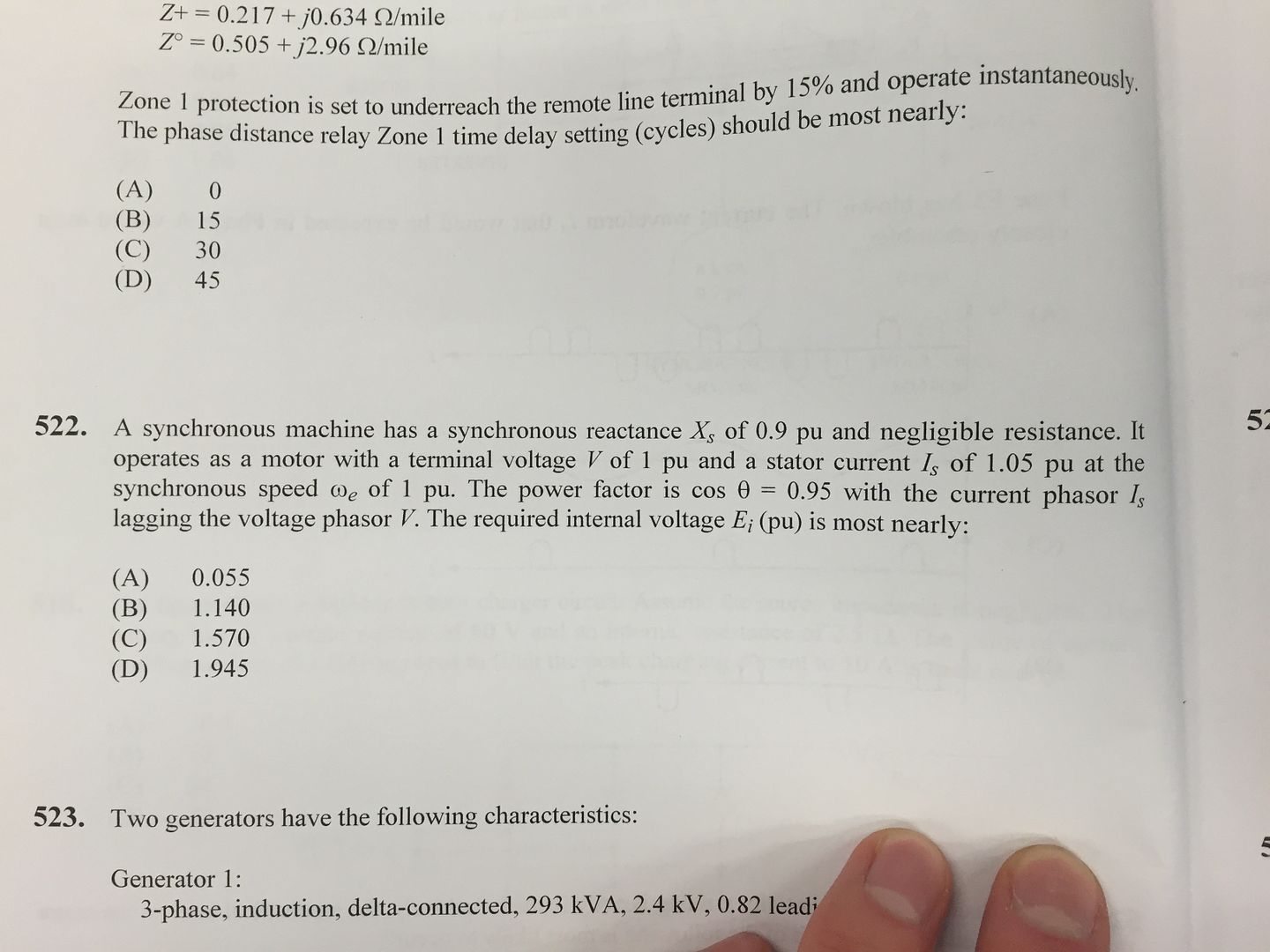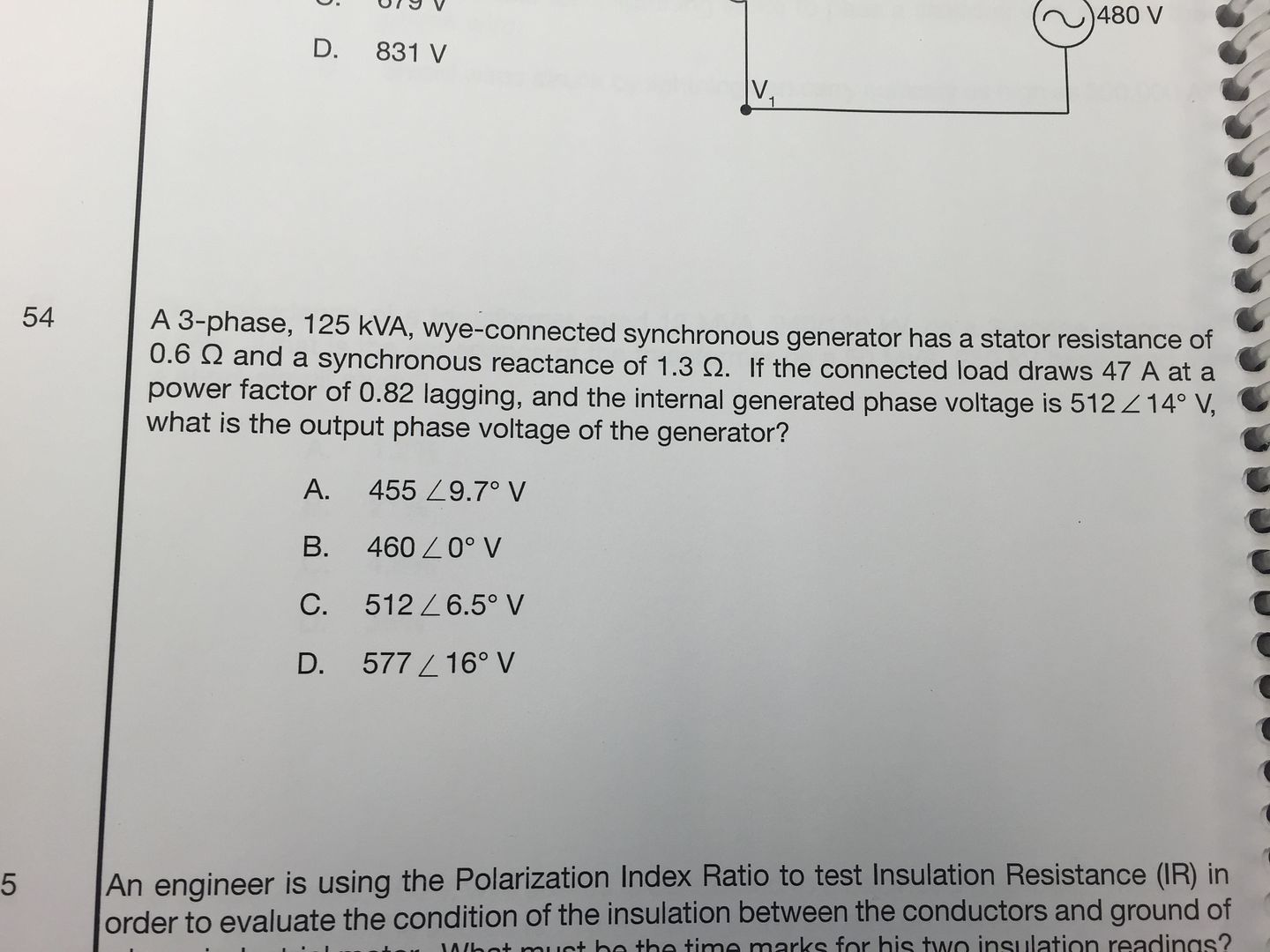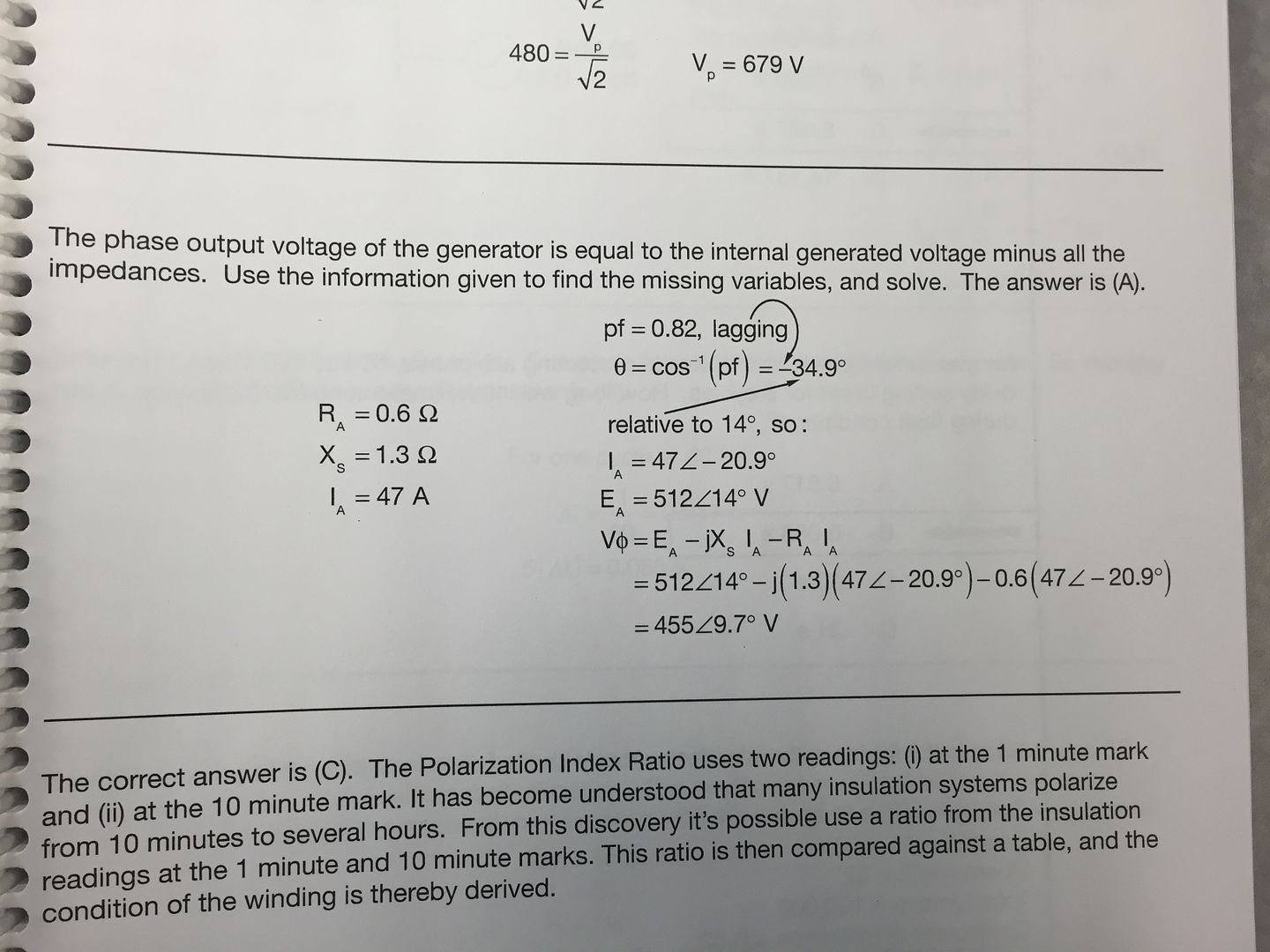Kovz
Chasing Dreams
Hey guys, I'm having difficulty understanding the basic expressions for calculating Terminal voltage, phase generated voltage, Internal Voltage and output phase voltage for generators and motors. Is it different equations for motors and generators?
I can't figure out what the correct equation should be. I thought to solve for terminal voltage, the equation would be Vt = Ei + XsIs
where Vt is terminal voltage
Ei is internal voltage
Xs is sych. reactance
Is is current.
But trying to solve Problem 54 on Volume 2 of Complex Imaginary has my brain racked.
Also see problem 135 and 522 on NCEES.
Any help is appreciated.
I can't figure out what the correct equation should be. I thought to solve for terminal voltage, the equation would be Vt = Ei + XsIs
where Vt is terminal voltage
Ei is internal voltage
Xs is sych. reactance
Is is current.
But trying to solve Problem 54 on Volume 2 of Complex Imaginary has my brain racked.
Also see problem 135 and 522 on NCEES.
Any help is appreciated.











